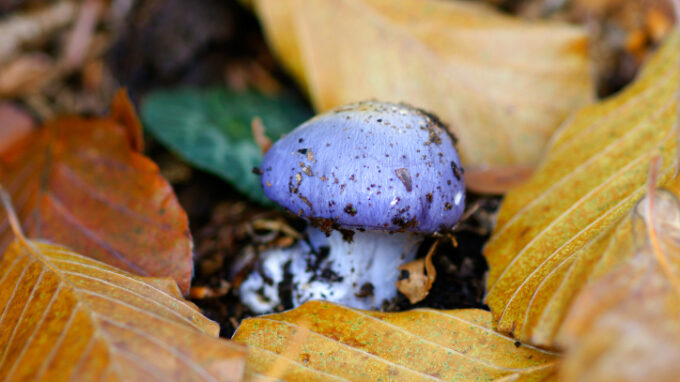Agricultural laborers who operate around a lot of unidentifiable fungi are at the greatest chance of developing pulmonary irritation from exposure to fungal particles, which can be harmful to wellness. The most frequent chronic illness linked to infection to fungal spores is an acute inflammation of lung tissue, often known as mushroom worker’s lung, mushroom picker’s lung, or rancher’s lung.
An example of fungi is a mushroom, which differs from a plant in that it lacks pigment, a green component that aids organisms in producing food through sunlight. Conversely, they use hyphae, which are fibers that may “lie dormant” underground for several weeks, to absorb nutrition. The mushroom develops and gains the capacity to release spores, which are small organelles that are equipped with all that is required to generate a fresh fungus, during the planting period. Individuals can breathe these spores when they are in the process of moving and reproducing in the atmosphere. If you want to know more about the topic, you may head over to Online Spore Retailer as they will guide you with almost everything you might want to know.
Hypersensitivity inflammation of lung tissue

Source: publichealth.jhu.edu
Fungi spore inhalation over an extended period can cause severe pulmonary illness and pulmonary irritation. The severe illness eventually progresses to long-term pulmonary illness. A typical kind of pulmonary fibrosis linked to contact with fungal spores is hypersensitivity inflammation of lung tissue.
Between four and six hrs after leaving the location where the contact occurred, you usually start to experience the indications of this sickness. Shivers, temperature, coughing, and breathing difficulties are possible indications. Persistent illness indicators can comprise a cold, shortness of breath, food reduction, and unintentional body weight reduction.
Asthma Attacks
Respiratory episodes can be brought on by the inhalation of spores in excessive quantities. Except for those who are sensitized to particular fungus, the vast majority of individuals are unaffected. Adolescent youngsters who are subjected to moisture and microbes indoors have a higher probability of acquiring breathing problems.
Treatment Options
Consult your physician if you experience acute inflammation of lung tissue signs. Treatments entail refraining from additional contact. Anti-inflammatory drugs like glucocorticoids may be administered if you have prolonged acute inflammation of lung tissue. Exaggerated immune inflammation of lung tissue may potentially be helped by respiratory medications. A pulmonary examination may be performed by a physician to assess the extent of the issue.
A moment of chance
Although fungi don’t live very much, their particles must travel swiftly. Pollutants and chemicals may then enter the picture.
Earthworms, certain bugs, cockroaches, small mammals, rodents, reindeer, and humans all find mushrooms to be rather appetizing. Whether they are the kind enclosed in a waterproof coating intended to be transported to a different neighborhood via excrement, a creature eating a fungus typically loses its germs.
Researchers have discovered that slugs and bugs stay away from poisonous plants. Certain poisonous mushrooms can be lethal, while others may merely render the diner sick enough to steer clear of that kind in the foreseeable.
Fungal toxins come in a wide variety. One type is a member of a genus of exceptionally attractive mushrooms often known as destructive angels since they are simultaneously attractive and lethal. They kill several people annually throughout the globe and are sometimes confused for edible mushrooms.
In treatment, individuals utilize fungal toxins. For instance, a medication to treat chronic migraines was created from the ergot species’ toxin.
Biological toxicity is seen in 1%–2% of mushrooms. Such a fungus is often referred to as a “toadstool,” however it is difficult to tell a palatable fungus from a dangerous species. Since it can be difficult to determine if a fungus is deadly or otherwise, it is never advised to consume any that you discover.
The majority of mushrooms are both wholesome and tasty. Simply be certain they are through a source like a supermarket or a mushroom specialist.
Consequences of toxic mushrooms

Source: wamu.org
Highly toxic mushrooms have the following three major consequences:
Hallucinations
Hallucinogenic poisons are present in some types of mushrooms. Known colloquially as “psychedelic mushrooms,” these psychoactive substances fall within this category. The golden crown is among the more well-known varieties. Anxiety, stiffness in the muscles, excitement, a quick heartbeat, and headaches are common side symptoms in addition to illusions. It shares a striking resemblance with several poisonous types of mushrooms.
The disease of the digestive system
Numerous hazardous mushrooms can give you belly pains, sickness, diarrhea, and constipation.
Fatal kidney disease
The murder crown mushroom is responsible for about nine out of every ten fatalities caused by fungus. The signs, which comprise uneasiness, cramping in the abdomen, puking, and bloating, start 6 to 24 hours after ingesting. The liver and kidneys can be severely damaged by the poison, and fatalities can happen within 48 hours.
Avoid giving your kids fungal toxin
In the practically major regions, numerous deadly fungi species are encountered in nature. The majority of younger kids who consume deadly mushrooms do so in their backyard gardens. Adolescent kids under the age of five have an inherent propensity to ingest objects. To lessen the chance of unintentional contamination if you have a child, frequently search your yard for mushrooms and eliminate any.
Avoid giving your pets mushroom toxin

Source: purina-arabia.com
When strolling their animals in locations where mushrooms might bloom, animal guardians must exercise special caution. If at all feasible, get rid of any mushrooms on their property before they accidentally consume them. Pets can get sick by consuming exotic mushrooms in a variety of ways, from diarrhea to serious heart diseases that can lead to fatalities.
Measures to Consider
Employ all required measures if contact with a lot of fungi is unavoidable. Make certain interior workplace spaces are sufficiently aired and use a shield with a good matchup, either partial or whole face. Working with fungi outdoors is preferred. There are mushroom microscopic organisms throughout. A brief encounter with a handful of fungal particles won’t have any negative physiological effects. Only those who frequently deal with fungi should usually require measures.

